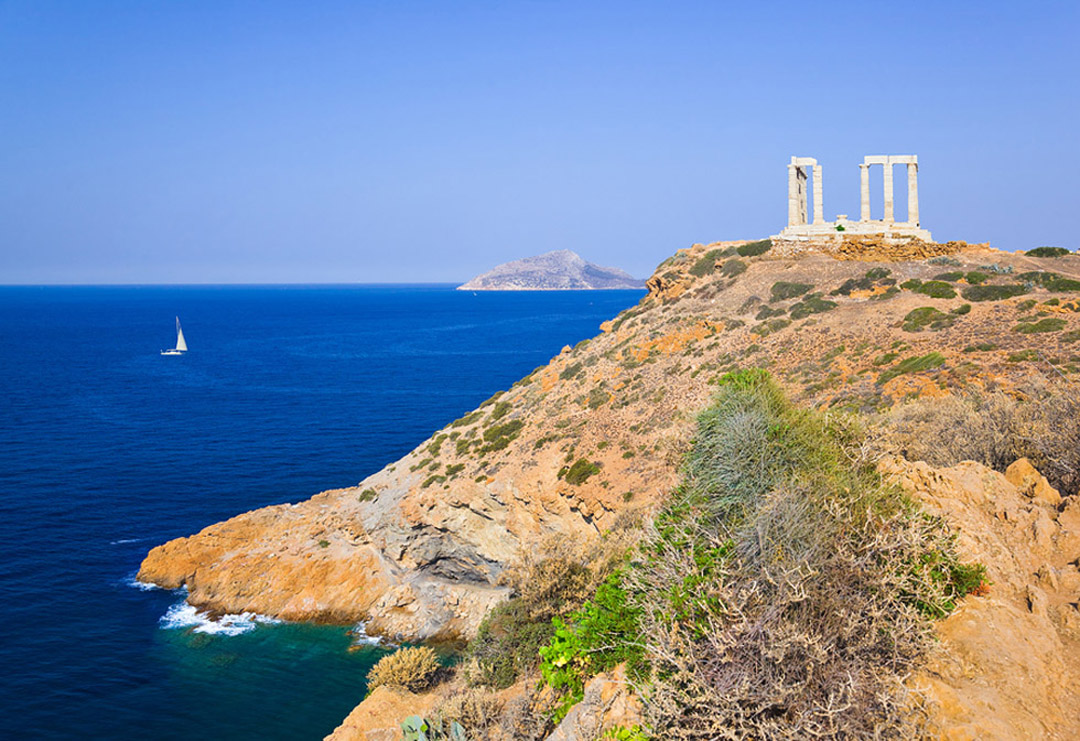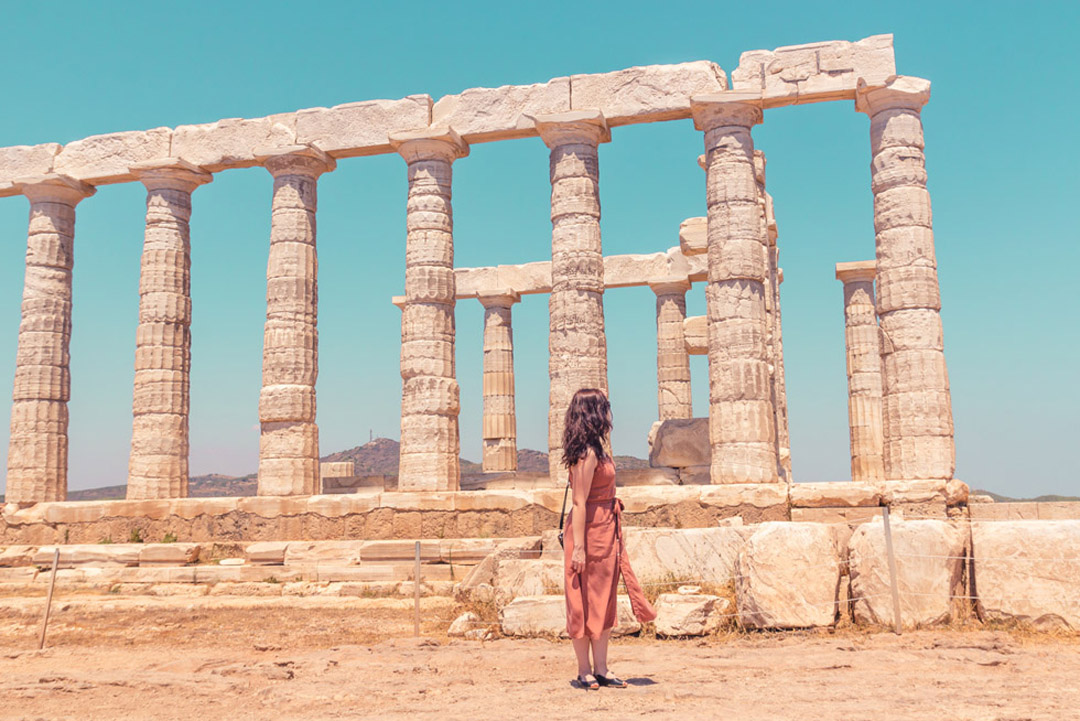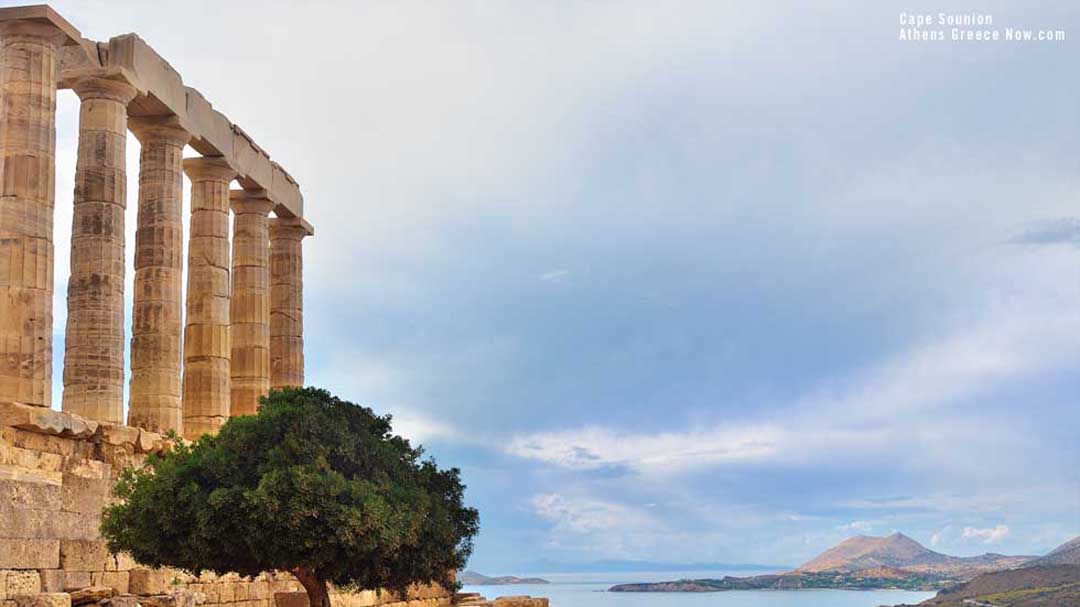Cape Sounion, Greece
Σουνίου
Getting there: The most common way to travel to Cape Sounion from Athens is by taking a public bus operated by KTEL Attikis, which offers a direct route to Cape Sounion.
About the location Cape Sounion
Cape Sounion is the most southern point of Attika, approximetely 43 miles outside of Athens heading southeast. Because of the location jutting out to the Aegean there are often high winds sweeping the coast. This is also the archeological site of a Doric columned temple from the 5th century B.C. (Lord Byron's signature is carved into one of the columns) along with other ruins of fortress walls and the remains of an ancient shipyard. This location looking out at the waters is considered one of the best in the Mediterranean for observing sunsets.
The temple structure still retains 12 upright Doric columns.
Map of Sounion
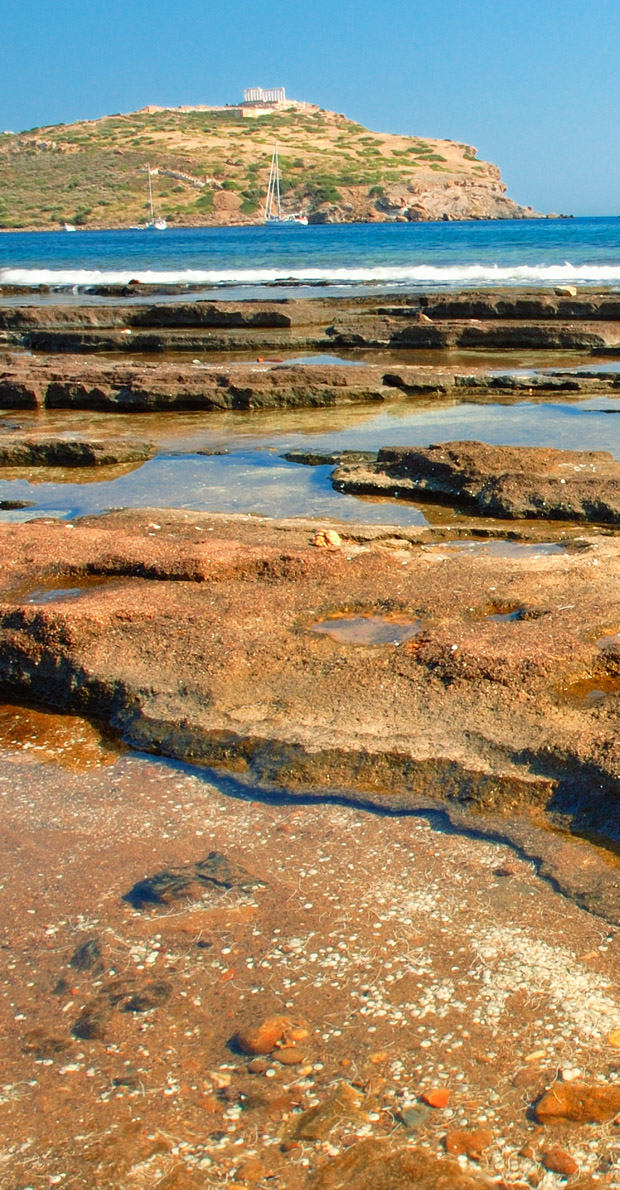
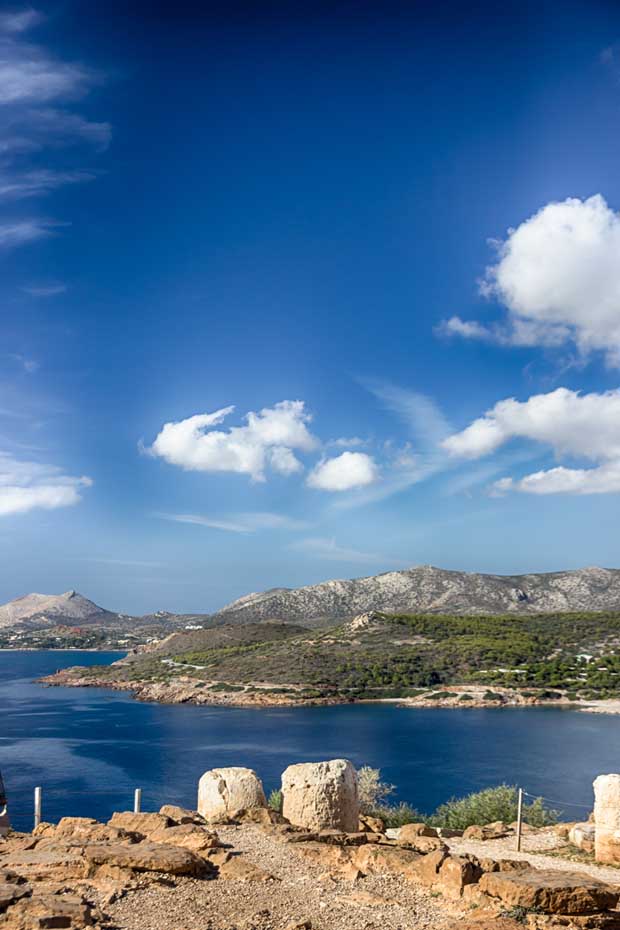
The view from the temple at Cape Sounion

10 important facts about Cape Sounion
Temple of Poseidon: The cape is famous for the ancient Temple still on site that was built in the 5th century BC.
Strategic Significance: Cape Sounion held strategic significance as a early-warning lookout point for protecting Athens from potential sea invaders.
Built by the Athenians: About the same time as the building of the Parthenon, the temple was constructed along with fortifications and lookouts.
Doric Architecture: The temple is built in the Doric architectural style, with large columns and a relatively simple, sturdy design typical of ancient Greek temples.
Sunset Views: Cape Sounion is renowned for its stunning sunsets, with views over the Aegean Sea and nearby islands, making it a popular spot for "selfies" by visitors and landscape and seascape opportunities for photographers.
Mythological Significance: According to Greek mythology, Cape Sounion is where King Aegeus leapt to his death, believing his son Theseus had died on a journey to Crete. The Aegean Sea is named after him.
Inscriptions: The temple’s columns have inscriptions carved by visitors over centuries, including the signature of Lord Byron, the famous British poet, who visited in the early 19th century.
Historical Invasions: Cape Sounion was fortified during various periods, including the Peloponnesian War, to protect Athens’ silver mines in nearby Lavrio, a particularly valuable resource for the Athenian economy.
National Monument: The site is now a protected national monument managed by the Greek Ministry of Culture with preservation a main goal.
Popular Day Trip from Athens: Being relatively close-in to Athens, Cape Sounion is a popular day-trip destination. Visitors come by car and public transportation to enjoy a mix of historical exploration, coastal scenery, and the beautiful Greek sunset.
ADVERTISEMENT
Guide Book for the Peloponnese: with Athens, Delphi and Kythira – Paperback – Amazon – Bradt Travel Guides, 288 Pages, November 18, 2025
The Acropolis in Athens Greece
The Acropolis - Parthenon and More



Greece's Golden Visa program


